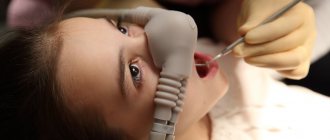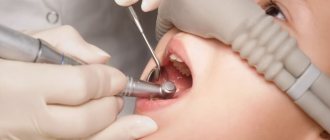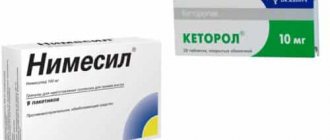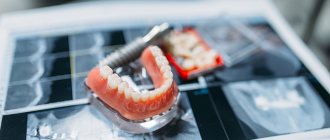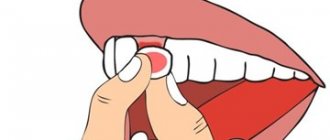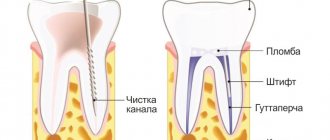Everyone knows such a widely used procedure in dentistry as local anesthesia, which is usually contrasted with “general”, that is, deep anesthesia. Many people have heard about the latter as a way to solve the problem of panic fear before dental intervention, especially when treating children. But few people know that there is another way to relieve patients from fear and pain, which is much more convenient for the doctor and comfortable for the patients than deep anesthesia. This is sedation. The chief physician and leading specialist of the Professorial Dentistry “22nd Century” in Moscow, Arkady Aleksandrovich Snitkovsky, talks about what it is and when it is used.
What is sedation in dentistry?
In medical terms, sedation is a state of half-asleep in which a person retains the ability to respond to verbal commands, thereby communicating with others, primarily with a doctor. Sedation does not replace the need for local anesthesia. This is due to the fact that in a state of sedation a person retains the ability to feel pain, and this is stress for the body. Therefore, the use of anesthesia under sedation is mandatory. Sedation, at a minimum, removes the emotional coloring of what is happening, so a person simply stops paying attention to uncomfortable and disturbing phenomena.
Can everyone use sedation: consider contraindications
Even the safest medical techniques have contraindications and limitations for use. Sedation is no exception; it cannot be used:
- For hypertension, hypotension;
- With diagnosed neurological and mental diseases;
- In severe pathological processes affecting the respiratory system.
Do not resort to sedation for any acute infectious diseases.
To exclude possible contraindications to the technique, before using sedation, a comprehensive examination is carried out, tests are prescribed, the patient himself must be frank with his doctor and honestly and in detail tell about all the diseases in the anamnesis, the presence of allergic reactions, and his condition at the current moment in time.
What is the fundamental difference between sedation and anesthesia in dentistry?
General, or deep, anesthesia not only puts a person into a state of sleep, but also suppresses some protective reflexes, including coughing, gagging and even partially breathing. Sedation creates conditions for a more comfortable stay for the patient in the chair and allows dental treatment to be performed without pain and stress. At the same time, all procedures performed are easier to tolerate, especially those that are accompanied by unpleasant sensations: tooth extraction, caries treatment, and others. Thanks to sedation in dentistry for children, the child relaxes and can tolerate treatment for a longer time. For example, at the age of four, it is difficult for a small patient to lie still in a chair for more than 10 minutes. Under ZAX (nitrous oxide - oxygen sedation for children), this time increases to 40 - 60 minutes, which allows the doctor to provide better treatment.
Anesthesia is a complete loss of consciousness. The person falls into deep sleep. Anesthesia in dentistry is also a fairly common occurrence, but there are strict indications for it and it is necessary to prepare for it.
What is the difference with anesthesia
Sedation is a relatively new technology, which most people have a vague idea about, and therefore quite often confuse it with general anesthesia. However, the difference between the techniques is fundamental. It consists of the following main points:
- Sedation does not lead to blocking the body’s main reflexes (cough, gag), which are “switched off” when using general anesthesia, and therefore dangerous disorders of the respiratory function during manipulations are completely excluded;
- The person remains conscious, and therefore the connection between him and the doctor remains. When general anesthesia is used, consciousness is switched off under the influence of drugs;
- Sedation has fewer contraindications and does not require lengthy preparation and rehabilitation.
Teeth are treated under sedation with constant monitoring of the patient’s condition, for which special equipment is used. After completing all the necessary procedures, the person is under the supervision of specialists for some time, but can return home on the same day. After using anesthesia, you will have to stay in the clinic for at least 1-2 days.
While talking about the difference between sedation and general anesthesia, it is also important to note the fact that dental treatment during sleep does not involve the risk of unpleasant and dangerous side effects that are common after using general anesthesia.
How can a person in a state of sedation respond to any verbal signals?
During human development, the part of the brain responsible for speech functions and verbal activity forms a certain automatism, which is subsequently triggered in certain situations, for example, emergency ones. It is these mechanisms that people who practice NLP influence.
Nitrous oxide - oxygen sedation, relieves anxiety, removes negative memories of the manipulation itself, which is especially important if this is a complex surgical procedure: removal of eighth teeth, implantation, especially massive if, for example, the patient is completely edentulous. No matter how hard the doctors try and no matter how high-quality the anesthesia is, the unpleasant sensations from the same sinus lift or removal of wisdom teeth cannot be eliminated. As you know, a lot depends on the type of nervous organization of a person. People who lead a very active, stressful lifestyle have a lower pain threshold, and the nervous system is often exhausted and more easily excitable. They are the most common candidates for sedation.
Complications after sedation
Do nausea and fainting occur after sedation, or can such nuances be clarified before it begins? Of course, the characteristics of patients may be different: for some it may be nausea, for others it may be dizziness, etc. All this, of course, is discussed in advance in consultation with an anesthesiologist-resuscitator. It determines the patient’s health characteristics and determines the reactions that are possible due to the action of the drug. Any sedative drug can cause:
- drowsiness throughout the day after the manipulation, especially if the treatment was carried out in the morning,
- weakness,
- mild nausea
- It may make some people feel hungry, while others may feel the opposite.
There may be peculiarities, and this is not something pathological or something negative, this is the norm.
How exactly does sedation occur in dentistry for children and adults?
There are various sedative drugs. For adults, they are most often administered intravenously, and for pediatric dentistry with sedation, nitrous oxide is used - oxygen sedation: a special nasal mask is put on, the child breathes through it and goes into a state of sleep. In fact, from a physiological point of view, nitrous oxide, an oxygen mixture, is not sedation as such, but the effect obtained when using it is similar to sedation. The difference is that with ZACS there is no depression of consciousness at all, which is even more convenient for the doctor. But you need to take into account that if the baby is already hysterical, sedation will not calm him down, but will only worsen the situation. Since the child remains fully conscious, he will most likely remember absolutely everything, but at the same time his level of tolerance will increase, and he will be more likely to be distracted by the cartoon that will be shown to him during the procedure. The use of nitrous oxide increases the period of time during which a small patient is ready to endure unpleasant manipulations, but does not cause either a suppressive or euphoric effect, that is, it is an absolutely safe procedure. The most important advantage of this method is the ability to communicate with the child, that is, complete control of the situation by the doctor.
Contraindications to sedation
We said earlier that not all patients may be suitable for sedation, let's look again at the factors that are contraindicated for sedation.
So these factors are:
- patient's age,
- characteristics of the body, including allergic reactions to drugs that will be administered, that is, incompatibility with sedative drugs in a given patient,
- bad experience that the patient previously had during sedation, and in him it can also cause fear and, accordingly, panic attacks (that “having gone half asleep” the patient may not control himself).
Regarding bad experiences with sedation - yes, such cases are rare, but unfortunately they do occur. Naturally, these characteristics of the body and circumstances will also affect the effect of the drug itself, accordingly, this is a contraindication. For such patients, more careful preparation for sedation is recommended. Or vice versa - we work with such a patient in terms of organizing his treatment under local anesthesia. First, the psychologist communicates with the patient and prepares him. We also work with the patient: we explain that these procedures are for treatment and they are painless, that the quality of anesthetics is now quite high and some patients will not experience pain.
All work during treatment, if we are considering therapeutic treatment, is carried out under a rubber dam,
that is, the patient does not experience any fear that something might get into the oral cavity. And after the first two manipulations in consciousness under local anesthesia, he understands that dentistry has nevertheless made great strides forward, and that it is possible to be treated without sedation without feeling fear.
Is there any contraindications for sedation in dentistry for children using nitrous oxide?
There are only a few contraindications for performing ZAKS: age under three years, respiratory diseases, such as rhinitis and runny nose, as well as epilepsy. The fact is that nitrous oxide, even in small concentrations, increases intracranial pressure. This is absolutely safe for a healthy child, since the fluctuations are completely insignificant. But with epilepsy, when the regulation of intracranial pressure is already impaired, this can provoke an attack. That is, in case of epi-status, with a clearly defined epileptic diagnosis, nitrous oxide - oxygen sedation is not used. As for one-and-a-half-year-old, two-year-old and even three-year-old children who are not yet able to interact verbally with a doctor, in the case of serious tooth decay, for example with bottle caries, it is recommended to use anesthesia.
Everything you need to know about sedation and anesthesia
One of the most persistent fears from childhood is the fear of the dentist. Most learn to overcome their fear and, despite their anxiety, undergo treatment. But there are people for whom dental treatment is a real nightmare! The irrational fear of a person with dental phobia does not accept any arguments that modern dentistry is painless and anesthesia works almost flawlessly. This leads to serious problems in the oral cavity; a large amount of work is required - treatment and prosthetics of both jaws (partial implantation, removal, root canal treatment).
To avoid such problems or help in an already advanced case, dental treatment under sedation is offered to patients.
Dental treatment using sedation is called differently: treatment according to the “anti-stress” program, treatment “in a dream”, treatment without fear. Despite the fact that sedation has been used in Russian dentistry for more than 10 years, few people know about it. In Europe, almost 60% of dental procedures are performed under sedation and every year sedation is becoming more and more popular. European trends are also developing very quickly in Moscow. Today, almost 20% of metropolitan patients undergo dental treatment under sedation. And although this service is presented on the Omsk market, it has not yet become so widespread. And our task is to convey to patients information about the opportunities that they can take advantage of.
So, sedation or dental treatment in a dream (from the Latin sedatio - to calm down) is a technology that combines a set of measures aimed at calming, physical and emotional relaxation of the patient during treatment.
The sedation procedure in combination with local anesthesia is a safe alternative to deep anesthesia, since there are a number of fundamental, simply colossal differences!
Narcotic analgesics are used during anesthesia. Even the most modern drugs used for anesthesia affect the patient’s condition. Despite the fact that they are indeed practically safe, a slight discomfort is still felt after waking up. Also, anesthesia may be contraindicated in certain diseases, for example, cardiovascular system, diabetes, hypertension. And sedation is a completely safe method. Only mild sedatives are used; they do not suppress the central nervous system as much as anesthesia, have a beneficial effect on the heart, and do not create a risk of pressure changes. Sedation is indicated for people with disorders of the cardiovascular system, hypertension, arrhythmia, and in panic states.
During treatment under sedation, a whole team of experienced specialists works with the patient: a dentist who will directly conduct the treatment, a nurse and an anesthesiologist who will monitor the patient’s health throughout the entire treatment.
During the sedation procedure, an experienced anesthesiologist, using certified Swiss and French drugs, puts the patient into medicated light sleep, while the patient is connected to special equipment that monitors and demonstrates to the team of doctors how deeply the patient is sleeping.
The immersion “into sleep” occurs in comfortable conditions in just a few minutes and almost immediately the patient leaves the feeling of fear, excitement, he relaxes and feels the same as during sleep. BUT! What is very important for both the doctor and the patient is that during treatment the patient remains in contact, hears the doctor’s requests and can fulfill them - for example, turn his head, open or close his mouth, etc.
When carrying out sedation, anesthesia is used, but after the patient is immersed in a medicated sleep. Those. all the negative impressions from being in the dentist's chair: the noise of instruments, some kind of knocking - everything that usually frightens our patients is completely absent here!
During sedation, the anesthesiologist constantly monitors the patient’s vital health indicators - blood pressure, heart, brain activity and all vital organs are reflected on the devices. At any time, the anesthesiologist can remove the patient from the state of sedation without any harm to him or to the treatment process.
Thanks to sedation, the patient’s perception of time changes significantly: long, difficult treatment is subjectively perceived as very short-term. 3-4 hours (and sometimes 6) spent in a chair do not cause discomfort. The patient wakes up rested, full of energy, the treatment process is not recorded in memory, and there are no pain symptoms. Unpleasant, previously tormenting memories (pain, the sound of a drilling machine) are completely gone! This happens because sedation causes a state of deep relaxation, in which the perception of external stimuli (light, sound, etc.) is greatly dulled. There is a result, but no unpleasant sensations or memories!
By the way, after sedation, engraftment progresses much better, since the absence of tension during treatment has a positive effect on the condition of the tissues.
What are the indications for sedation (in some cases, sedation is absolutely necessary - otherwise treatment is even dangerous):
- Fear of dental procedures.
- Long dental procedures. If the patient needs to spend several hours in the dental chair (large complex work is being carried out, for example, sinus lifting, installation of several implants or simultaneous removal of several teeth), we recommend sedation to the patient.
- Stroke, traumatic brain injury. Patients with concomitant severe pathology, when the sensation of pain can cause a sharp deterioration of the condition.
- Hypertension, heart attack (not in the acute period).
- Chronic lung diseases.
- Endocrine diseases.
- In case of allergies or intolerance to local anesthetics, to eliminate the gag reflex.
- Patients with special needs (cerebral palsy, Down syndrome, autism, epilepsy).
There are still a number of contraindications for the sedation procedure, as for any other procedure:
- state of alcohol or drug intoxication
- acute phase of severe somatic diseases (for example, heart attack in the acute period)
- pregnancy
- allergies to medications used
Within 12 hours after treatment, patients are not recommended to drive independently, as the drugs used reduce attention and speed of psychomotor reactions.
In certain cases, according to indications, dental procedures require the use of general anesthesia. The need for general anesthesia occurs more often in children, less often in adults. During general anesthesia, the patient's consciousness and muscle activity are completely switched off; breathing is provided by a ventilator.
Thus, the only risk for the patient is to find a Clinic capable of providing this service at the required high level.
The use of sedation and anesthesia in the practice of dental treatment requires the dental clinic to meet strict requirements. To avoid making a mistake in your choice, pay attention to the availability of the following items in the clinic:
- A medical license not only for carrying out activities using drugs intended for sedation and anesthesia, but also a license for anesthesiology and resuscitation. Only clinics that have these licenses can legally provide services using sedation and anesthesia!
- Separate equipped operating room. This is not just a surgical room - it is an operating room, equipped with the latest generation artificial lung ventilation apparatus, equipment that monitors vital parameters during the period of general anesthesia.
- All procedures involving sedation and anesthesia must be performed by an experienced, qualified dentist and anesthesia team.
- Sedation is carried out using modern equipment and Swiss and French drugs of certified quality.
In Omsk, only a few clinics have a sufficient level to fulfill all these requirements - they offer this service to their patients.
To check all the information, don't hesitate to ask questions! Specialists at the Elite Center clinic say that this procedure is becoming increasingly popular among their patients. Thanks to sedation, clients overcome their fears and decide on long-term necessary treatment!
Sign up online
Registration Online
Depth of anesthesia
Let's generally understand what anesthesia is.
Our brain is a complex set of neurons that constantly exchange impulses with each other. Some substances can inhibit synaptic transmission between certain groups of neurons. Moreover, different substances have different mechanisms of action and their own characteristics. In fact, anesthesia is also a type of anesthesia. Only in contrast to the local shutdown of local pain neurons, with local anesthesia we partially “turn off the brain.” As a result, general anesthesia is not like completely “turning off” the brain. This is rather a kind of very deep sleep, from which you can wake up only when the anesthesiologist allows it. What is suppressed first? For starters, this is consciousness. The main purpose of general anesthesia is to reduce the patient's stress level. We want to make sure that the entire treatment goes unnoticed by him and does not leave any unpleasant memories. In addition, pain sensitivity is suppressed and motor activity is inhibited. That is, with proper anesthesia, the patient is not in pain, and he does not try to get up and leave, pretending to be a sleepwalker.
Of course, suppression of the functions of the central nervous system should turn off only consciousness and pain, without affecting the important autonomous centers for the regulation of heartbeat, respiration and vascular tone. Only experienced doctors can provide all this correctly. There are usually four degrees of anesthesia depth:
- Superficial anesthesia.
- Light anesthesia.
- Full anesthesia.
- Ultra-deep anesthesia.
If necessary, the anesthesiologist can vary the degree of CNS depression, for example, to ask the patient to move the jaw correctly.
This can be done when using propofol, for example. Or, conversely, increase the depth if the patient begins to worry. Why are such methods needed at all if there is a conditional local articaine, which can most often be done? The problem is primarily panic fear and dental phobia. A good patient is a calm patient, not one who tries to run away in horror and flinches at every move the doctor makes. This will not benefit the patient himself and will not help the doctor to properly treat him. Additional arguments in favor of anesthesia will be a very pronounced gag reflex and a large volume of intervention. We cannot simply inject anesthetic into a patient, especially a small one. The local anesthetic also has maximum dosages for simultaneous administration, and, for example, bilateral conduction anesthesia on the lower jaw can cause difficulty breathing due to the complete loss of tongue sensitivity. Well, and most importantly, even the most sensitive doctor will never agree with a child to treat 15–20 teeth at the same time. Yes, it also happens when children do not brush their teeth properly, eat buns and do not go to the dentist.
Therefore, oddly enough, general anesthesia can often be an easier and more comfortable choice for a young patient and the attending physician.
